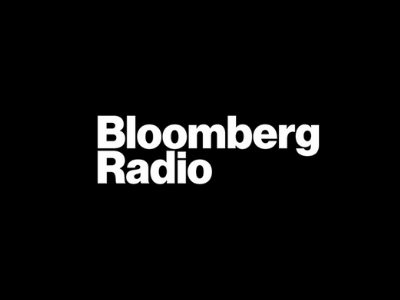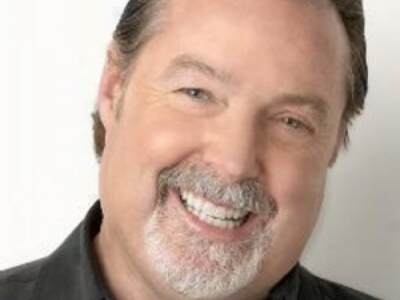Predominantly Black neighborhood on Indianapolis' eastside seeks historical designation
News > Business News

Audio By Carbonatix
10:42 AM on Wednesday, October 29
By DARIAN BENSON/MirrorIndy
MirrorIndy (AP) — In the 1950s and ’60s, the streets of Martindale were lined with fruit trees and berry bushes. If Eunice Trotter forgot to eat breakfast, she could always count on plucking an apple or pear off of a tree on her walk to School 26.
It’s one of the things she remembers most about growing up in the predominantly Black eastside neighborhood. She remembers what she calls the entrepreneurship of the neighborhood, too. Martindale was full of local businesses serving the community.
“We had the ice man and the watermelon man and the vegetable man,” Trotter said. “All of these people would be in wagons that they would drive up and down the street to sell their products.”
Trotter is now the director of Indiana Landmarks’ Black Heritage Preservation Program. She’s leading the effort to register the Martindale neighborhood in the National Register of Historic Places. That designation would give Martindale access to tax incentives, grants and support for preservation.
“Erasure of Black history is very much occurring all across the country,” Trotter said. “I hope that Indianapolis will embrace its history, including its African American history, and remember the contributions of these citizens who have helped make Indianapolis what it is today.”
Boundaries for the proposed Martindale Historic District are 30th Street to the north, 25th Street to the south, Dr. Andrew J. Brown Avenue to the west and Brouse Avenue to the east.
Trotter said within those boundaries lies Frederick Douglass Park, about 100 Flanner homes and several historic churches. But the boundaries are further north than what she had hoped for. There are strict requirements a neighborhood has to meet in order to be listed on the National Register, including the number of historical buildings that need to remain intact. Trotter said too many buildings south of 25th Street have been lost, so Indiana Landmarks has had to accept the approved boundaries.
“We’re at a point today where if we don’t address the historical significance, the historic integrity will be so lost that we will never be approved for a historic district listing,” Trotter said. “So we have to act now.”
Martindale was established in the 1870s as a mainly working class, industrial neighborhood centered around the manufacturing of railroad equipment. The neighborhood would become a vibrant hub for Indianapolis’ Black community during a time when racial segregation shut Black residents out of jobs, determined where they could live and limited their civic participation.
Martindale had its own barbershops, grocery stores and even a cab company. There was the Dunbar Library, which was once managed by the state’s first Black librarian with formal training. And children attended the neighborhood’s segregated Indianapolis Public Schools 26 and 56. Some of the city’s oldest Black churches are in Martindale — Indiana Landmarks identified at least 40 churches in the area, some opening their doors as early as 1875.
Anthony Conley is a local historian and is working with Indiana Landmarks to establish Martindale as a historic district. He said what Martindale residents experienced was cultural self-sufficiency.
“The Black people had in this neighborhood the idea that, ‘I have what I need to sustain me culturally here,’” Conley said. “‘I have a theater right here and I could go there and not face those kind of discriminations. I can go to different stores here and not have to wait until everybody else is served.’”
Conley said a good example of this is Douglass Park. In the 1920s, Black Indianapolis residents could not use public park amenities, including swimming pools. With donated land, the city created Douglass Park for Black residents in 1921. The park opened after a persistent campaign by a reporter for the Indianapolis Recorder, the city’s Black newspaper.
“You can look at Douglass Park as an extension of ongoing racial segregation,” Conley said. “But you can also look at it as an expression of empowerment. People coming together, wanting something and working with the local municipal government to achieve that goal.”
Over the next few years, the park would grow with the addition of a swimming pool and golf course. Today, it remains an important part of Martindale. At 80 acres, the park makes up a significant portion of the proposed historic district. Last year, the park opened a $21 million renovated family center, new basketball courts and an upgraded playground.
Growing up in Martindale, 60-year-old Fred Jackson said he was always at Douglass Park playing basketball or going swimming with his friends. He remembers watching the Dust Bowl basketball tournament, where soon-to-be great professional basketball players would play.
“I’d ride my bike up here and see them,” Jackson said. “Billy Keller, Freddie Lewis, Freddie Brown, it’s just amazing as a kid growing up and seeing them in your park, in your area, it was so amazing.”
Jackson cast his vote for former President Barack Obama at the park and remembers a line so long, it almost reached Dr. Andrew J. Brown Avenue, a street that borders the park. Now he goes on walks with friends who also grew up in the area, reminiscing about their childhood.
He’s happy to see neighborhood kids on the playground, playing pool in the community center or lining up for a hot meal served out of the park’s kitchen. He said the upgraded center will benefit the community, especially the kids in the neighborhood. And he hopes a historical designation will benefit the community, too.
“I do believe that it’s going to help people understand that this is not just 46218, this is not just the Martindale area, this is not just the Douglass Park area,” Jackson said. “This is a community that can build itself up to the way it used to be.”
Jackson’s home is within the historic district boundaries, as is the house where he grew up and where his mother still lives today. He said while some things have stayed the same, a lot has changed in the neighborhood. Jackson said there are abandoned homes and some of the churches have left as well.
Like in many Indianapolis neighborhoods, construction of I-70 destroyed houses and displaced residents. And as residents and businesses moved away, crime and poverty increased. When industrial businesses left, residents would later deal with the long-term effects of environmental concerns of pollution and contaminated soil.
In 1992, residents formed the Martindale-Brightwood Community Development Corporation. Since then, the two neighborhoods have been almost universally linked.
But it will always be just Martindale, not Martindale Brightwood, to 71-year-old Karen Taylor. She’s proud to be from Martindale and still works in the neighborhood as the seniors program coordinator at Edna Martin Christian Center.
Taylor said her childhood in Martindale was one of the happiest periods of her life. Like Trotter, she remembers the fruit trees in the neighborhood’s front yards. “I raised both of my children in this area because I wanted them to know where I came from, what I grew up with, what we were forced to live with,” Taylor said. “It was important for my children to grow up here, because I wanted people to know there (is) some good in 46218.”
Her house is just a couple streets over from the house she grew up in. Both houses are just shy of fitting within the proposed historical district boundaries.
Walking through the neighborhood on an October morning, Taylor can recall what families lived in which houses. She still calls Dr. Andrew J. Brown Avenue “Martindale Avenue,” its name until the late 1980s. Walking south, she points out where George Marshall’s grocery store was and where Club Savoy, a popular night club, once stood. Farther down was Jacobs Brothers Funeral Home and Dr. Emmet Brown’s dentist office and his church.
The historic district boundaries don’t stretch this far because many of the original buildings are no longer standing. She hopes they can still be recognized in some way.
“Even if the buildings are not there, if just a kind of plaque or something to let people know at least this is what was here,” Taylor said. “Not a whole lot of information on it, but at least let them know that it was here and it existed in the neighborhood.”
Taylor said more people are moving to Martindale. She says she can already feel the effects of gentrification. The homes are getting bigger and pricier. There are new businesses and the city has started several infrastructure projects.
She is trying to keep an open mind. But it’s all the more reason for at least some of Martindale to become a registered historic district.
“Things are changing and I can understand that,” Taylor said. “But I want them to know the meaning behind Martindale and why it was established. I don’t want us to lose that.”
___
This story was originally published by Mirror Indy and distributed through a partnership with The Associated Press.




